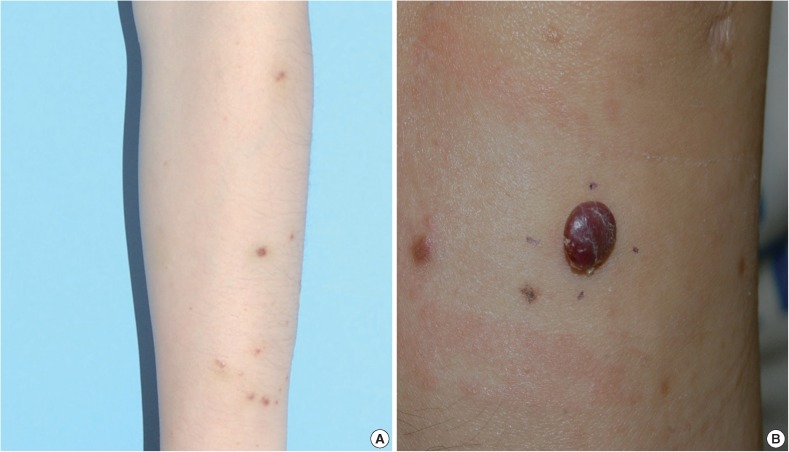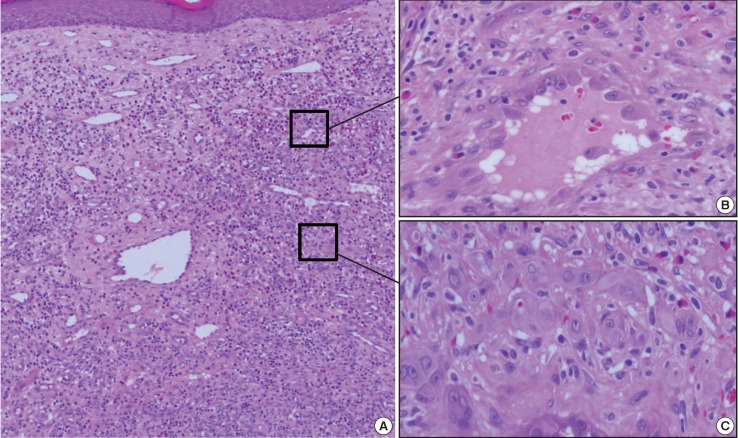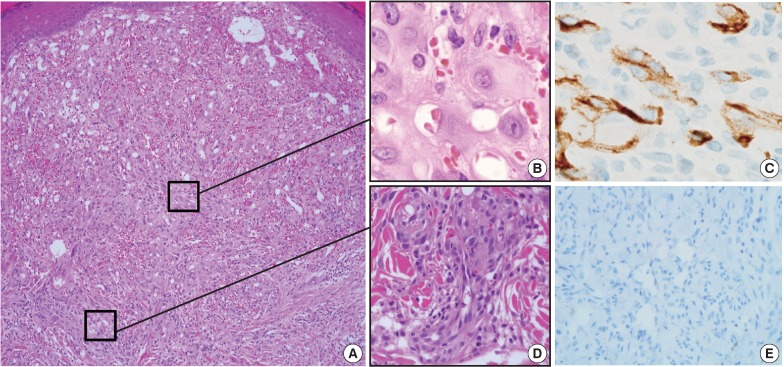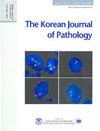Solid form of epithelioid hemangioma: a case report.
Korean Journal of Pathology
Pub Date : 2014-10-01
Epub Date: 2014-10-27
DOI:10.4132/KoreanJPathol.2014.48.5.394
引用次数: 4
Abstract
Epithelioid hemangioma (EH) is an uncommon benign vascular tumor, of controversial etiology that usually presents as a slowly growing nodule on the face or digit of a middle-aged woman. 1 Most lesions have a nonspecific nodular appearance with frequent secondary changes such as excoriation and bleeding. Multiplicity is also a common finding. Histopathologically, EH is characterized by a mixture of vascular proliferation and marked mixed inflammatory cell infiltration, and was first de scribed by Wells and Whimster 2 as angiolymphoid hyperplasia with eosinophilia. The proliferation of vascular structures lined with prominent endothelial cells is a distinguishing feature of EH. The epithelioid endothelial cells that protrude into the vascular lumen create a characteristic “cobble-stone” or “tombstone” appearance. A chronic inflammatory cell infiltration in cluding lymphoplasma cells and eosinophils is a consistent find ing. EH has a diverse range of microscopic features, depending on the composition and distribution of the vascular and inflam matory cellular components. EH has been described in the literature as an inflammatory angiomatous nodule or, an atypical or pseudopyogenic granuloma, 3,4 when infiltration of various inflammatory cells is predominant, and a histiocytoid hemangi oma 5 when cobble stone-like endothelial cells are conspicuous. Some cases of EH consist entirely of solid sheets of epithelioid to spindled cells without fully canalized vascular structures. The solid form of EH can be difficult to diagnose and is occa sionally misdiagnosed as a malignant vascular tumor. EH is a benign neoplasm and surgical excision is sufficient for its treat ment. Recently, we experienced a solid form of EH with no inflammatory component, which showed a dramatic change into the typical morphology on the consecutive biopsy. This is the first reported Korean case of a solid form of EH, which patholo gists should include in the differential diagnosis of epithelioid vascular lesions to avoid overdiagnosis of epithelioid vascular malignancies.



实型上皮样血管瘤1例。
本文章由计算机程序翻译,如有差异,请以英文原文为准。
求助全文
约1分钟内获得全文
求助全文

 求助内容:
求助内容: 应助结果提醒方式:
应助结果提醒方式:


